Hummus w/ Calabaza Squash
No sooner had I begun to think about roasting Calabaza for curry, I began contemplating what else I would do with all of the squash! Long story short, I bought an absolutely enormous calabaza squash (9.55 pounds to be exact). And now have the quite fortunate dilemma of trying to figure out what to do with it! I knew that I was going to make curry and probably burritos and maybe vegan chocolate mousse or even truffles... But my next thought turned immediately to hummus. I made a great pumpkin hummus several months ago and have been craving it ever since! So, of course soaking chickpeas for calabaza squash hummus was next on the docket.
I have running out of chickpeas, though. Ordinarily I would use 2 cups per batch. But I have found myself in the unusual predicament of only having 3 cups! This comes out to some troubling math because, if I use 2 cups now, I won't be left with enough to make hummus again...
So, the most economic thing to do seemed to be to, rather than make a single batch and then not have enough to do anything with, to use all of it at once and make an almost double batch. With the addition of a couple of cups of roasted calabaza, it ended up turning out as probably more than 2 batches in the end. And that is something that I am not disappointed with! Although I may now have to figure out where to get bulk chickpeas in this town...
Classic Hummus
It should be noted that made a large batch of hummus and then cut it in half to add calabaza squash to one. I have adjusted the recipe for just the amount of the calabaza proportion. If you want to make both batches at once, just double the hummus recipe, remove half of it from the food processor, and then add calabaza purée and mix until combined. That's why you see this recipe in stages of classic and calabaza hummus.
Calabaza Squash Hummus
Variations of Calabaza Squash Hummus
You can throw just about anything into hummus. I make it with squash, spinach, jalapeños, roasted tomatoes. You name it, you can make hummus out of it! It's also a delicious substitute for sour cream on savory burritos.
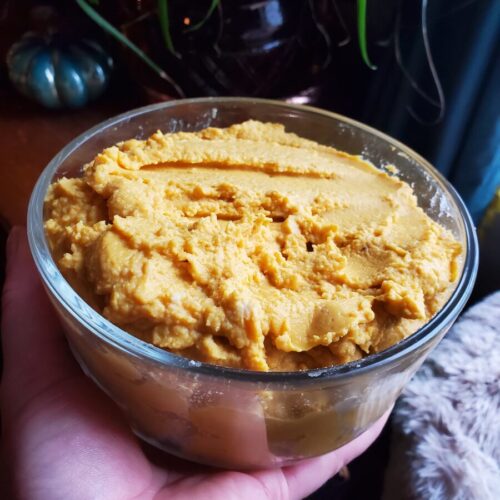
Hummus w/ Calabaza Squash
Equipment
- Large Pot
- Food Processor
Ingredients
- 1 ½ c. chickpeas soaked overnight
- 2 c. calabaza squash purée
- 3 cloves roasted garlic (or 2 cloves unroasted garlic)
- 1 lemon juiced
- 1/2 tbsp. tahini
- 1 tbsp. olive oil
- 1/2 tsp. cumin
- 1/2 tsp. salt
Instructions
Prepare Ingredients
- I also use Roasted Garlic to make hummus quite a bit. This is entirely optional, though. You can easily cut the amount of garlic in half! If you do want to roast garlic, you'll need at least a head of garlic, olive oil, and a garlic roaster or aluminum foil.
Soak Chickpeas Overnight
- Soak chickpeas/garbanzo beans in cold water for at least 12 hours.I like to do this overnight because then you're asleep during the down time. Although you can soak them in the morning and still be able to cook them in the evening.Soaking is also important! Do not use canned beans!! The texture won't turn out the same and, since hummus is defined in large part by its texture, no matter how closely you get the flavor to match, the graininess of canned chickpeas.
Roast Calabaza Squash
- You can roast the calabaza squash at any time, even up to a couple of days beforehand. Just make sure to have started it by the time that you cook the chickpeas after the initial soak.
- Preheat oven to 450 degrees Fahrenheit.
- Cut squash in half and scoop out the innards to remove all of the seeds and stringy pieces.
- Once you've cut in half and removed the innards from the squash, wrap in aluminum foil. You can also place this on a baking sheet if you want to keep any of the juice from seeping through the foil.
- Bake for roughly 2 hours depending on size. Make sure to flip halfway through so that the squash sides are face up.
- Let cool to the touch.
- Remove the skin and add squash to the food processor. Purée until smooth, making sure to scrape the sides occasionally.
Cook Chickpeas
- Drain the chickpeas. Add to a large pot and cover with a couple inches of water.
- Bring to a boil and then reduce heat to a simmer.
- Simmer for an hour and a half to two hours, or until tender. You may need to adjust the temperature to keep them from boiling as they cook down.They should begin to shed their skin and be soft, much like the consistency of a barely boiled potato. They should still keep their shape and not turn to mush. But theoretically putting a fork in them would split them in half.If, when you go to remove the skins, you're peeling them off each individual chickpea, they're not cooked if. If they chickpeas are just crumbling and everything is turning to mush, they are overcooked!
- Drain the beans immediately after cooking.
Remove Skins
- This is arguably the worst step to making chickpeas. You don't have to remove every single skin, but the more that you do remove, the better the texture of the hummus will be. The skins are tough and give it a grainy texture. Which is not what you're looking for in something that should be soft and smooth!
- The easiest way that I've found to remove the skins as quickly and easily as possible is to run them under cold until cool, place them in a large bowl, and fill with enough water so that the chickpeas are covered by at least 1/2 an inch. Then, rub a handful of chickpeas between your palms at a time. Much like you're doing the "Buuuuuuuuur, I'm cold!" motion. The skins should separate and float.If you've cooked the chickpeas long enough, the skins should easily slide off of the chickpeas. If you've cooked them too much, this will cause the chickpeas to break apart and disintegrate. If you're close to the right cooking time, you should be fine. It can be difficult to remove as many skins as you would have otherwise and you may get some graininess in the end result, but you should still get delicious hummus out of it!
- Remove the skins and drain the chickpeas.
Make Hummus
- Add chickpeas, calabaza, lemon juice, garlic, tahini, olive oil, cumin, and salt to a high powered blender or food processor. Blend until mixture forms a smooth paste and you can no longer see pieces of chickpeas.
- Add 1/2 c. crushed ice and blend for 2-4 more minutes. This is entirely optional, but the rapid cooling helps with the texture.If you don't have crushed ice, you can also add ice water or olive oil, 1 tablespoon at a time. The exact consistency differs slightly depending on how much the chickpeas have absorbed water during the simmering process. Even if you cook them perfectly, the age of the chickpeas can still be a variable. If they're too thick, just add a little bit more liquid!
- Once a smooth, consistent texture has been achieved, remove and chill before serving. I usually chill for about an hour. This is optional as well, but warm chickpeas aren't exactly what we tend to think of when we look to hummus!
Tips, Tricks, & Notes
- For more information on hummus, I have an article on The Fundamentals of Making Hummus. This includes the chickpea vs. garbanzo bean debate, canned vs. dried chickpeas, and types of food processors and puréeing that work best (and least best).
- For more information on puréeing the squash, I also have an entire article on The Fundamentals of Roasted Calabaza Squash.
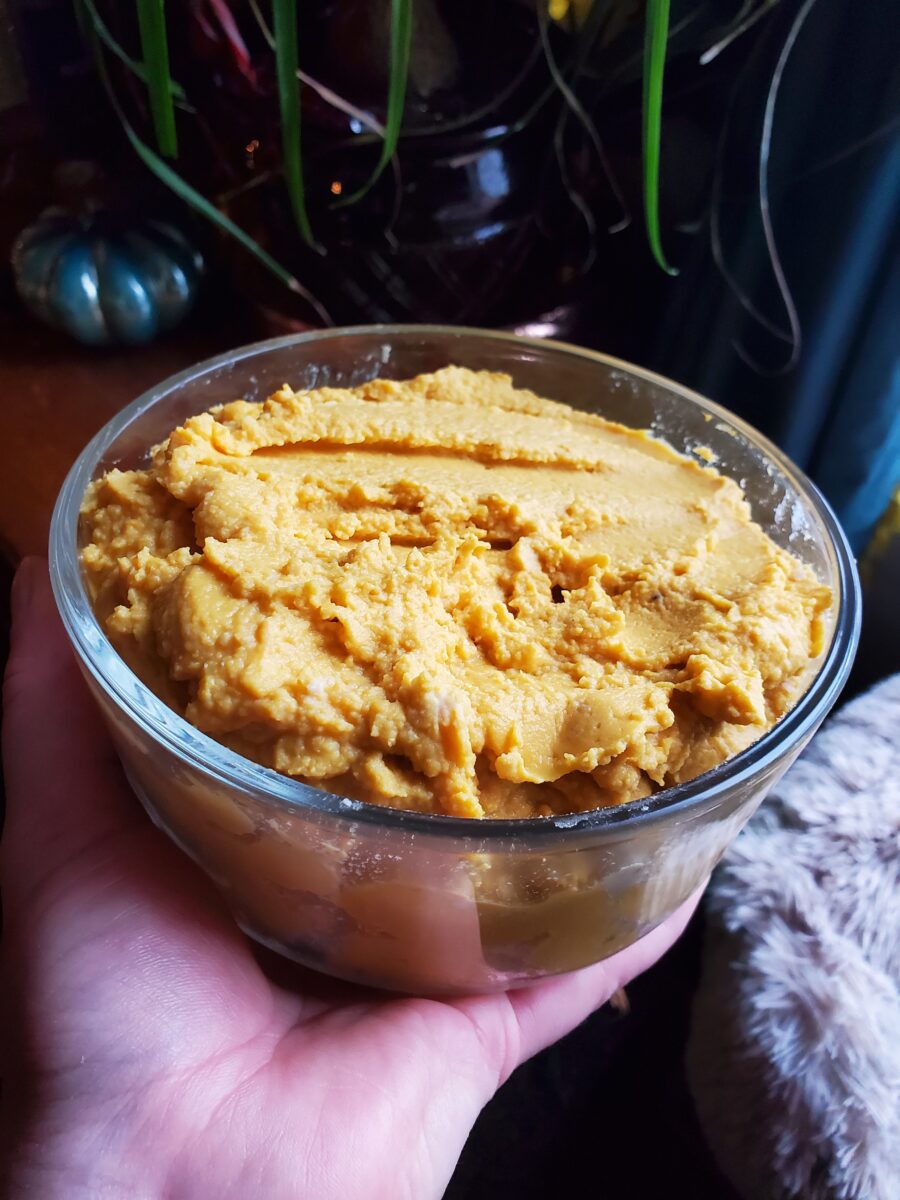
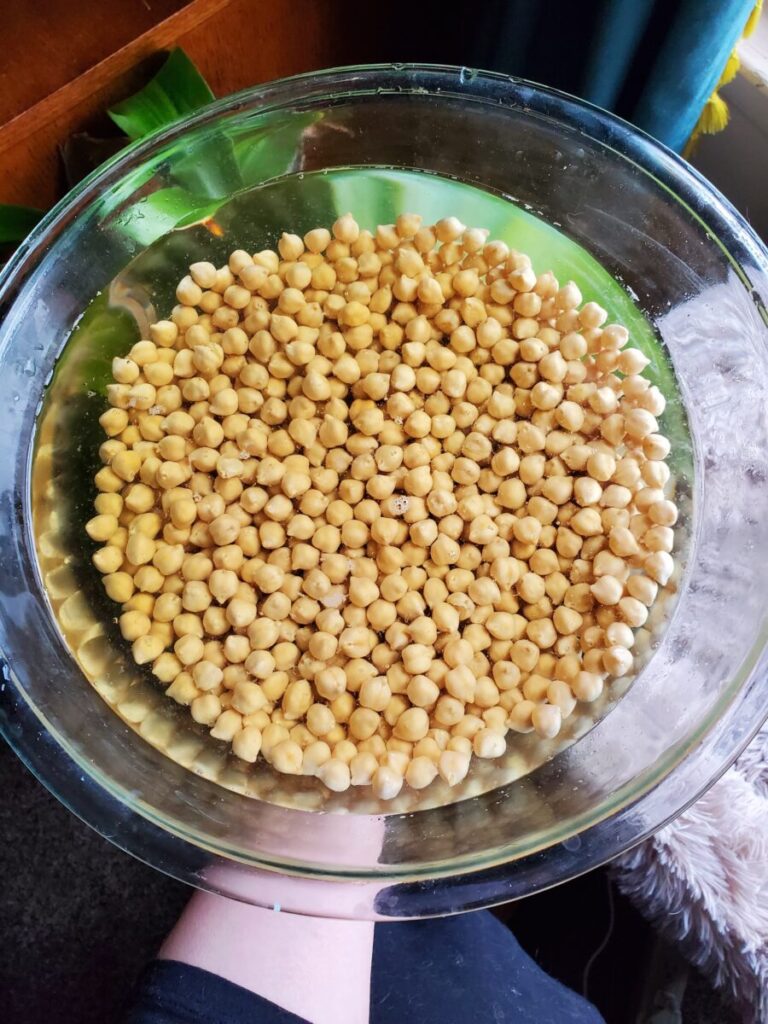
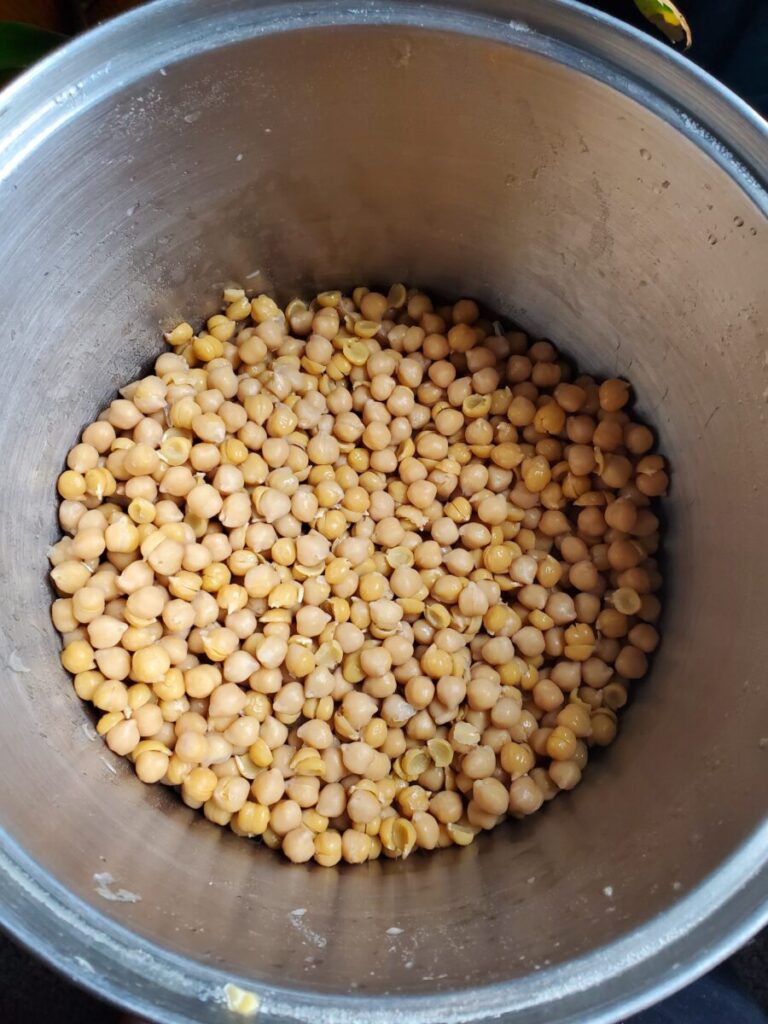
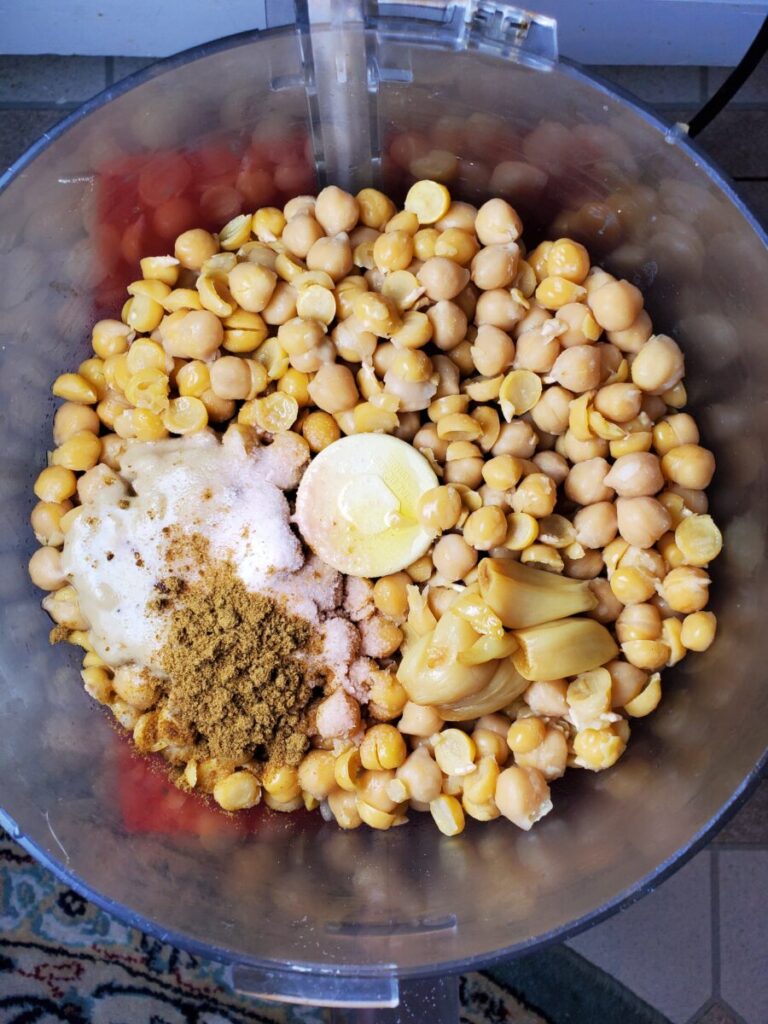
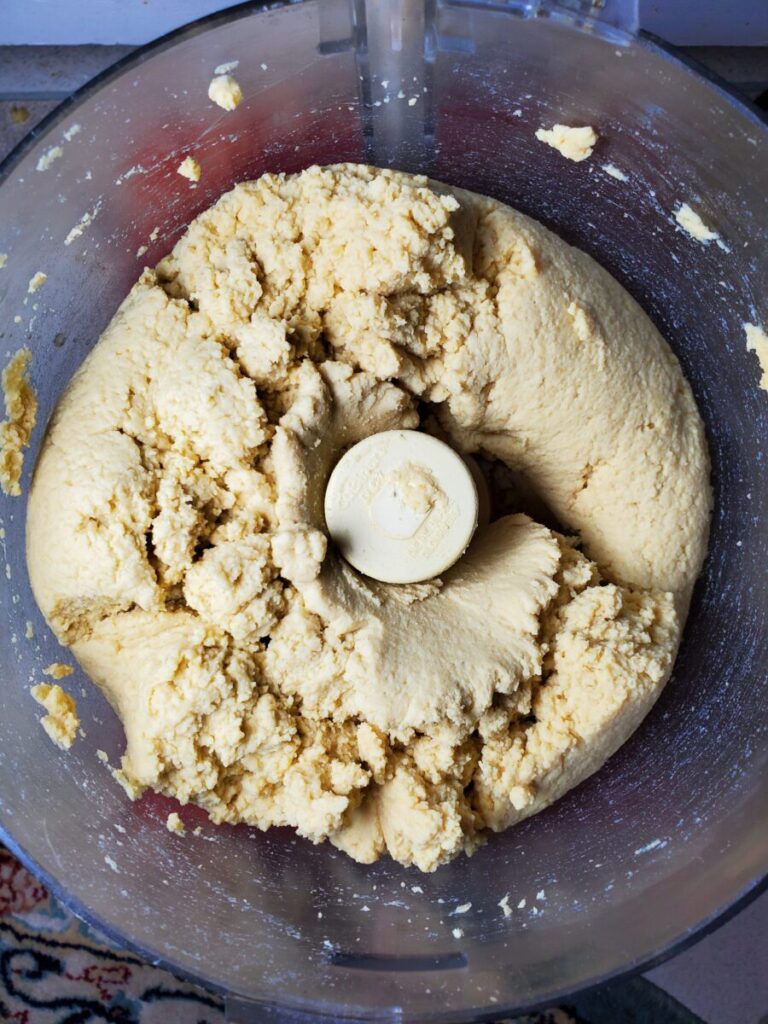
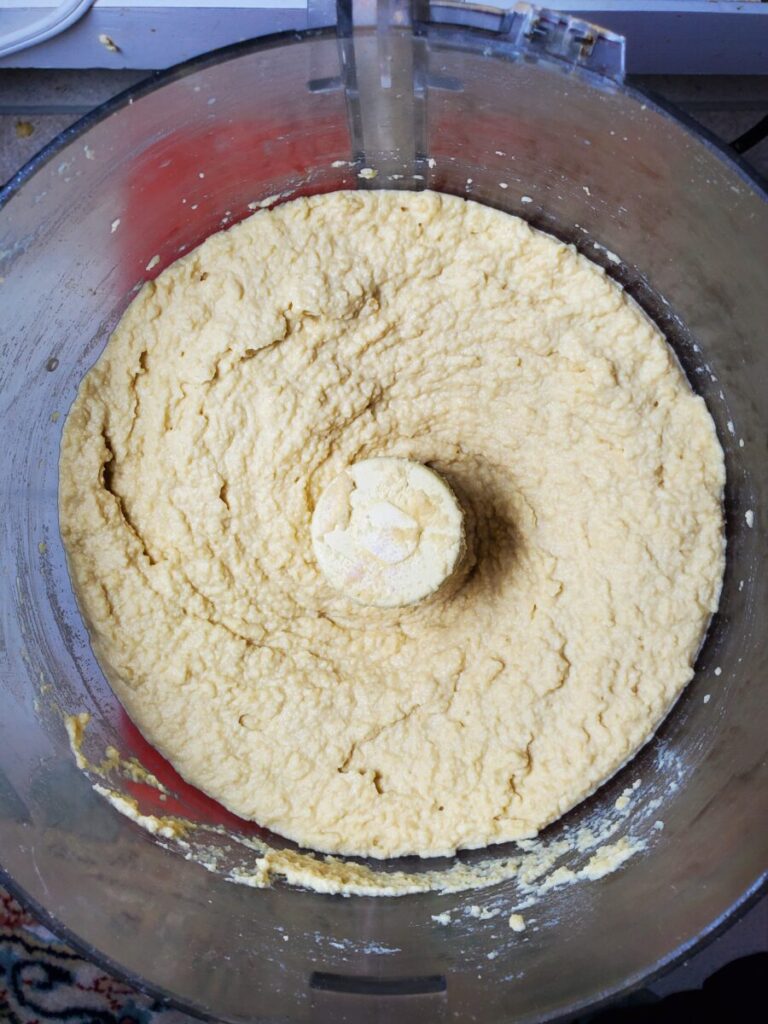
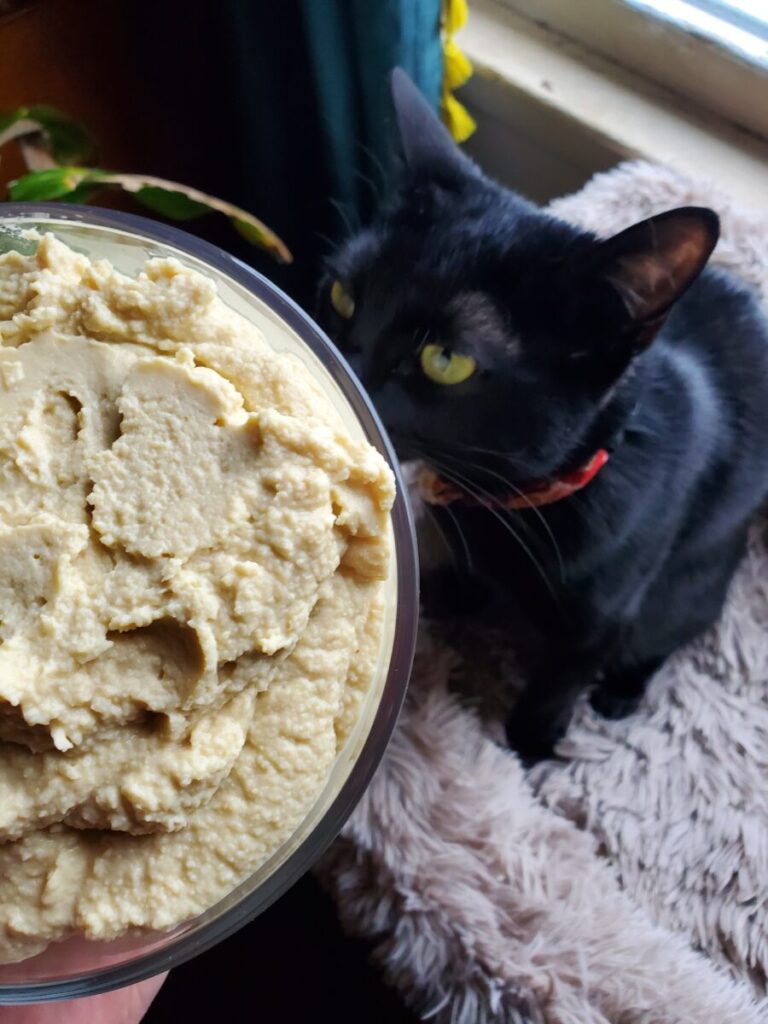
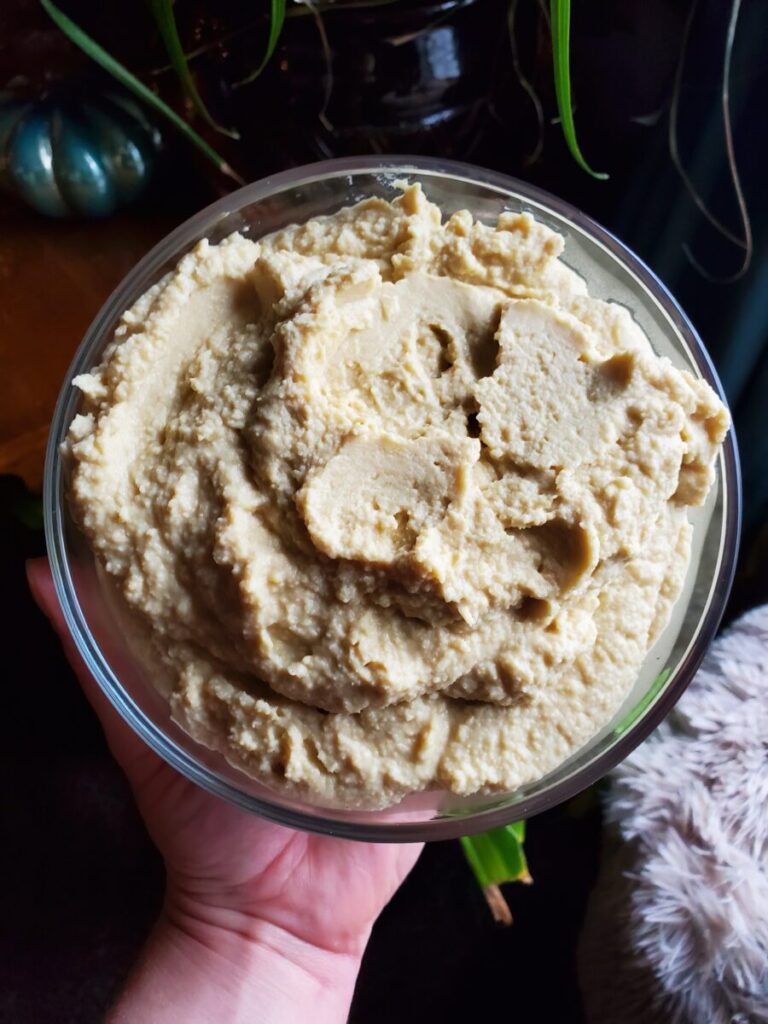
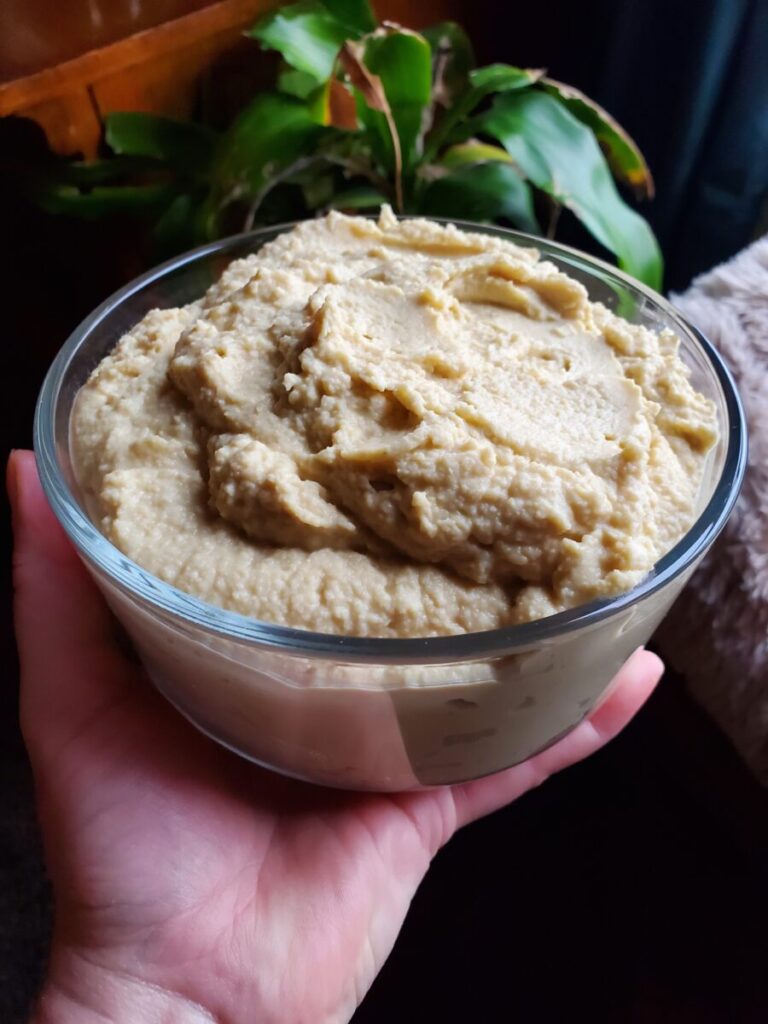
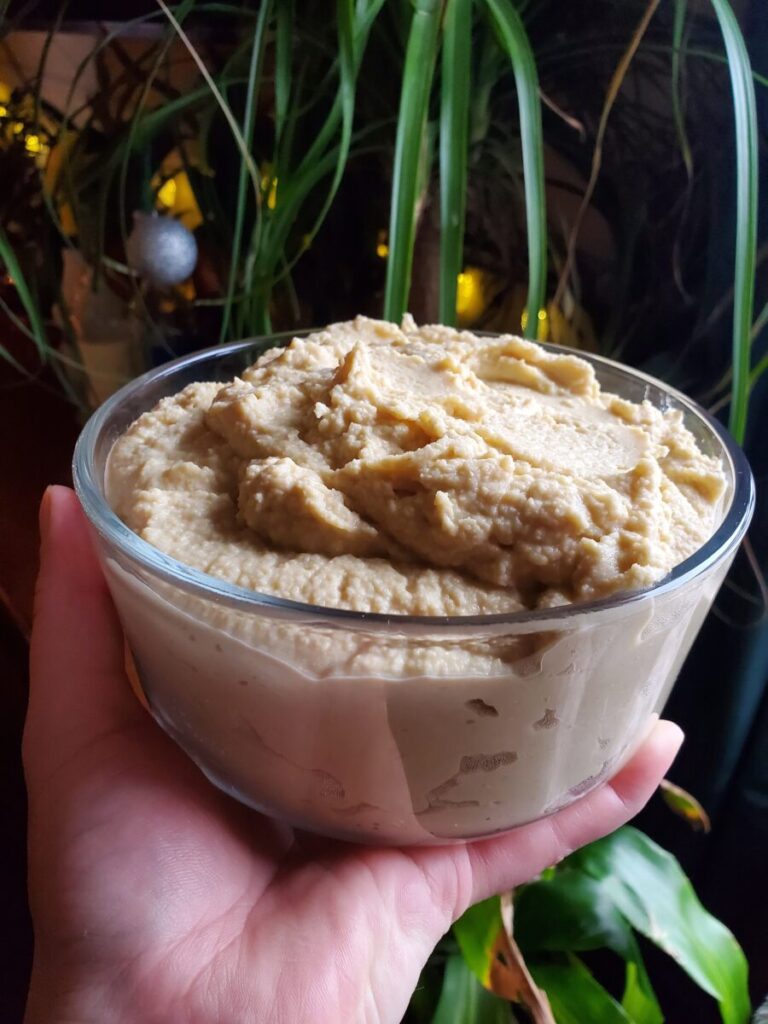
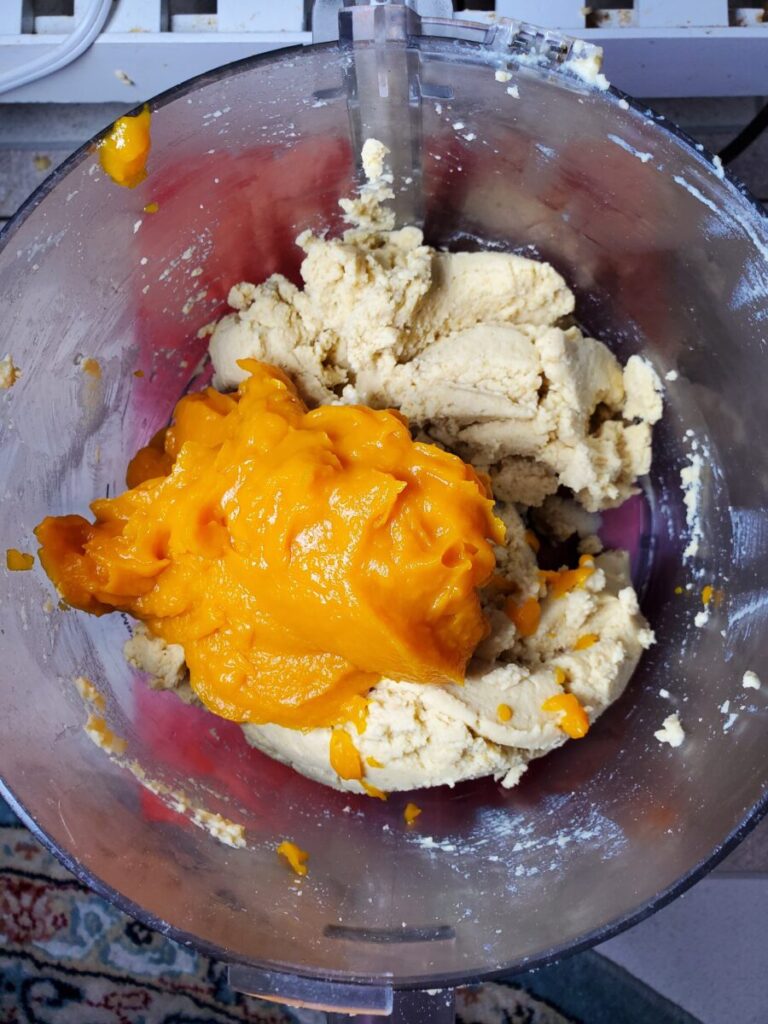
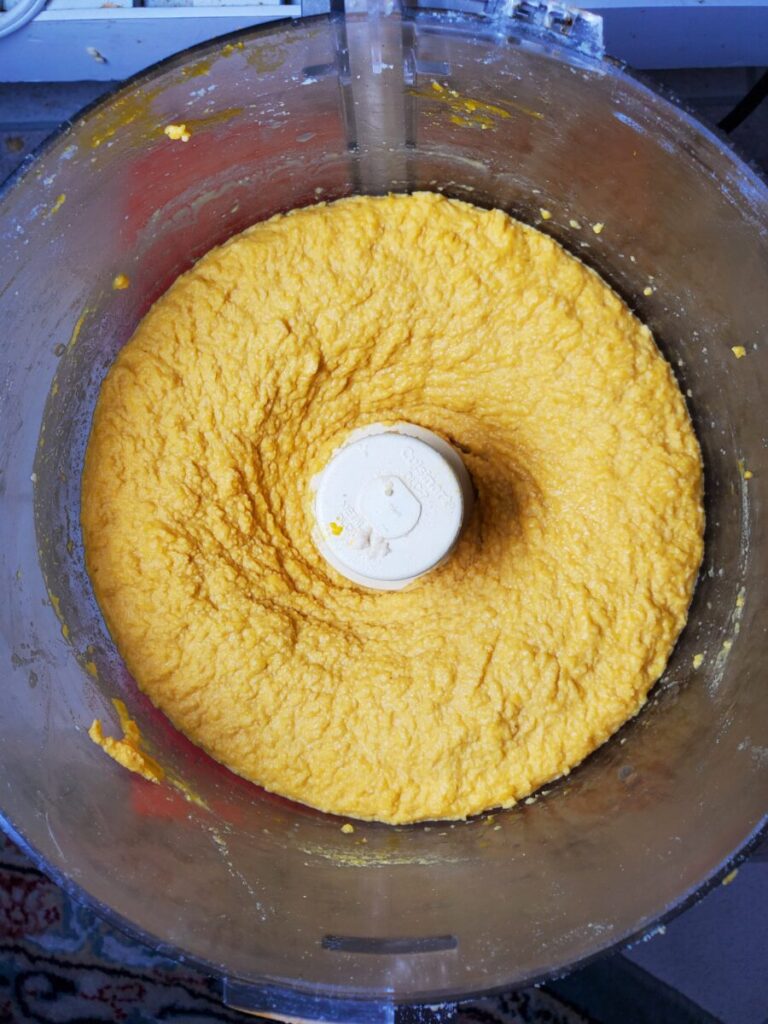
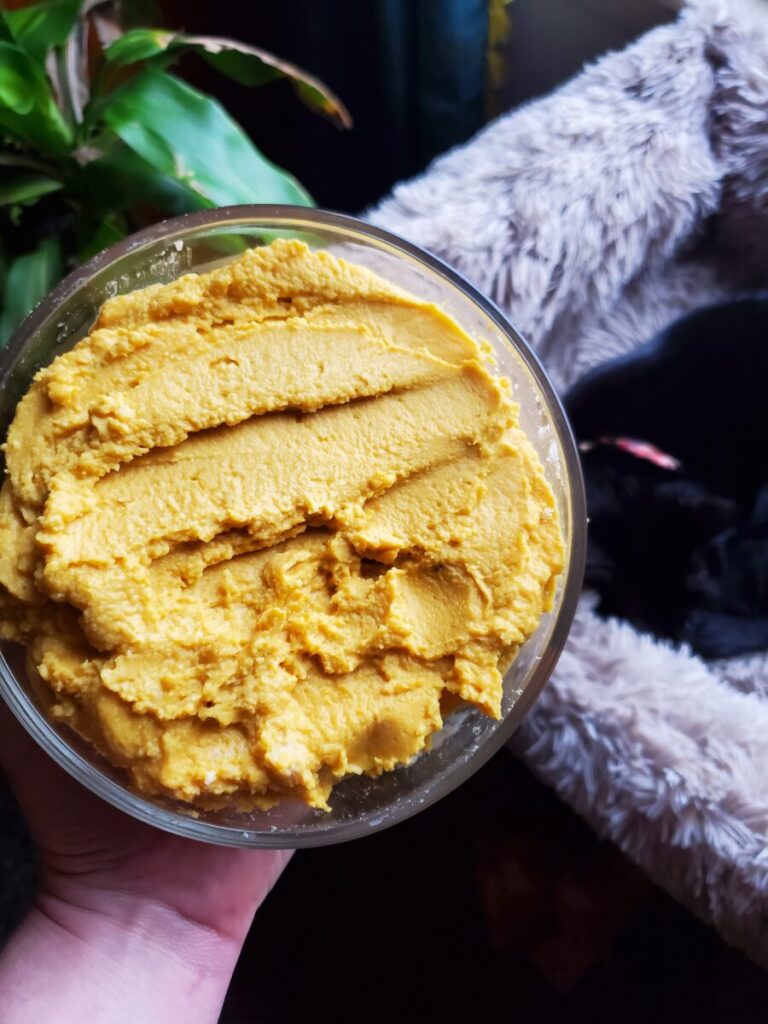
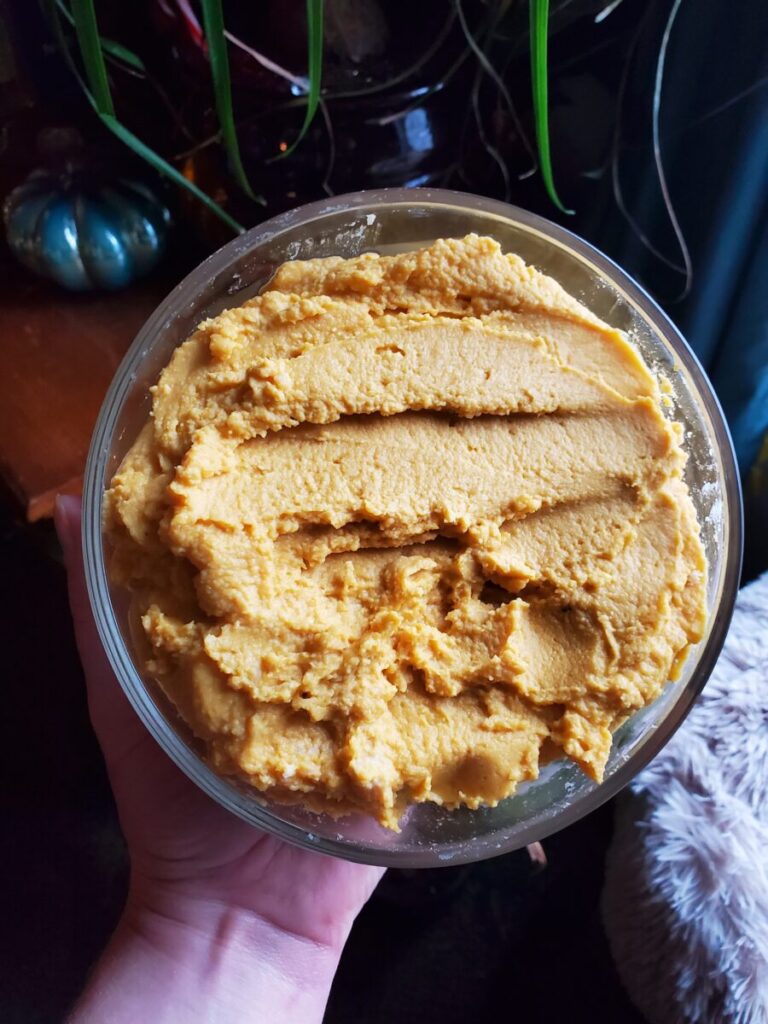
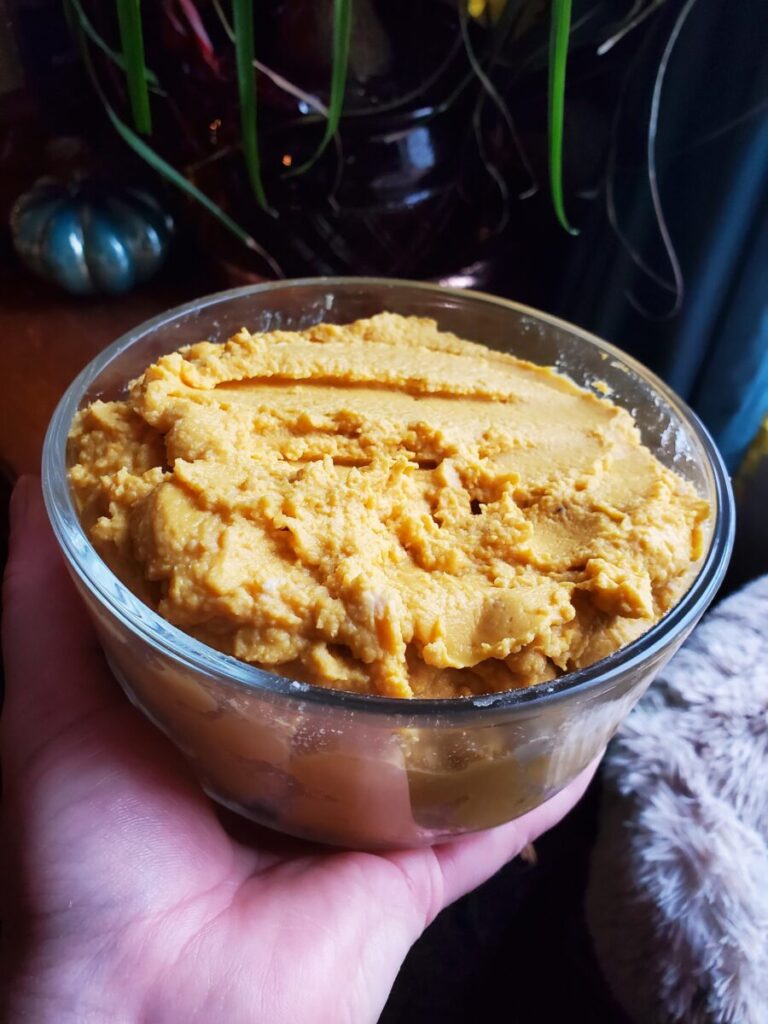
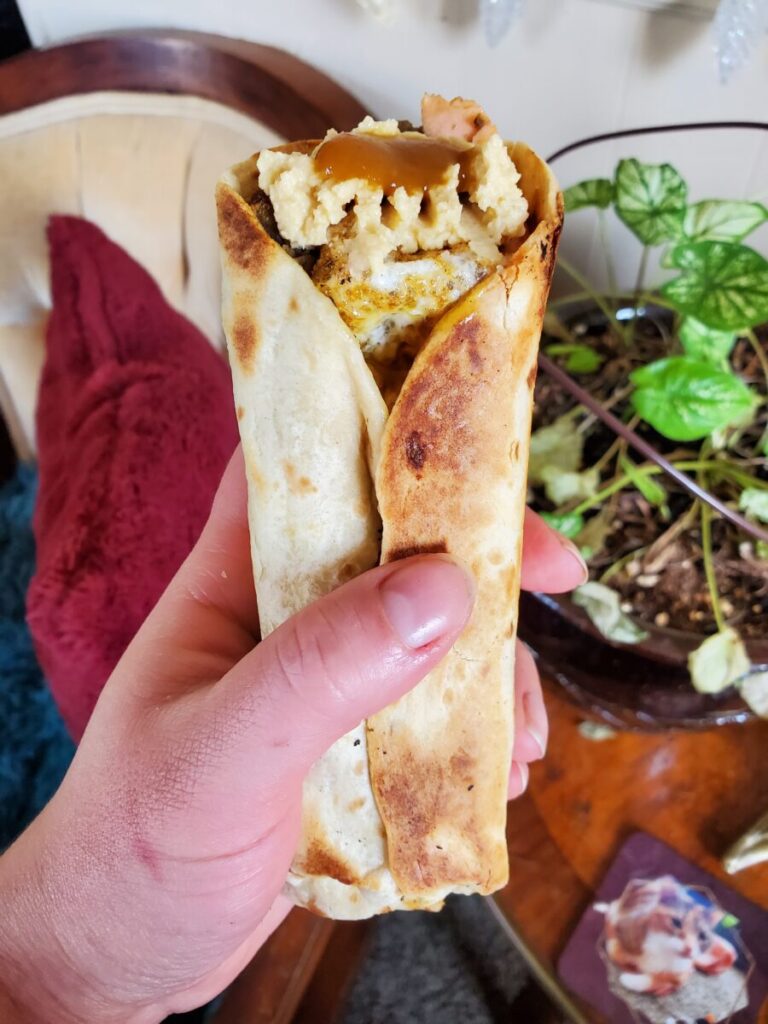
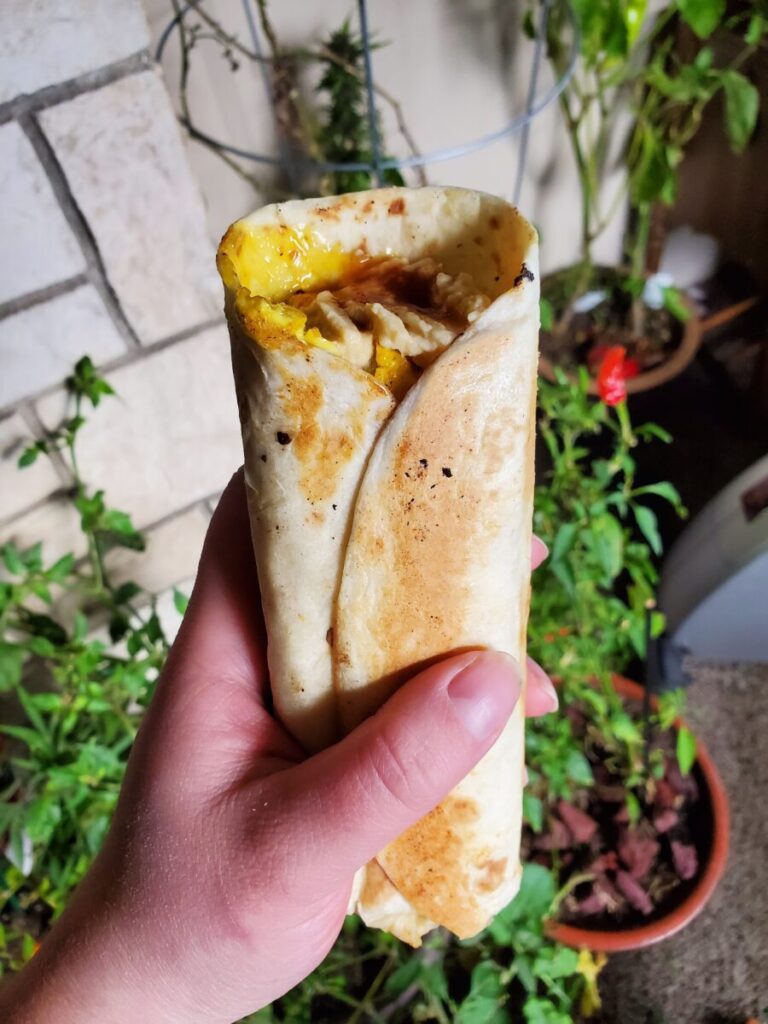
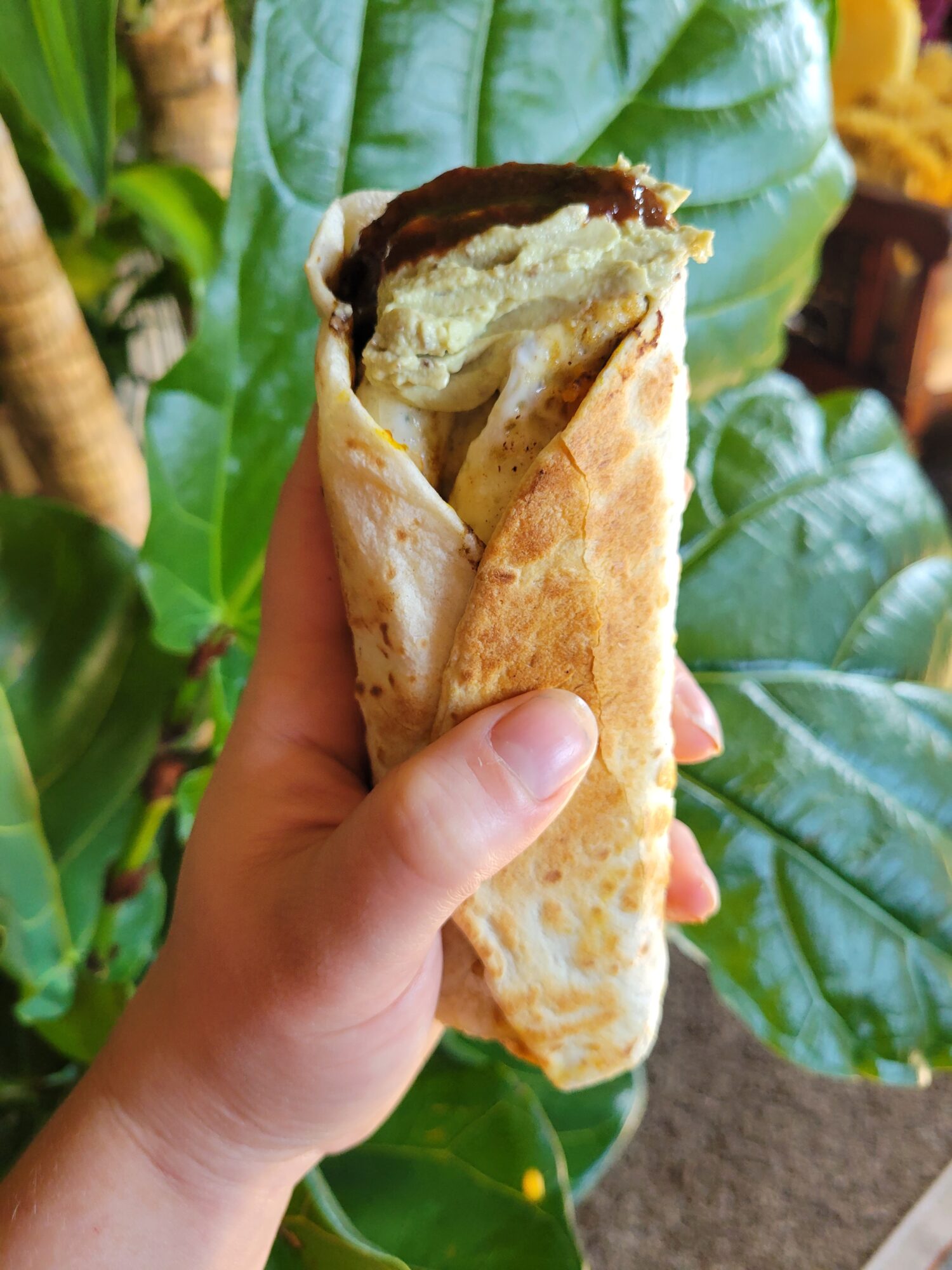


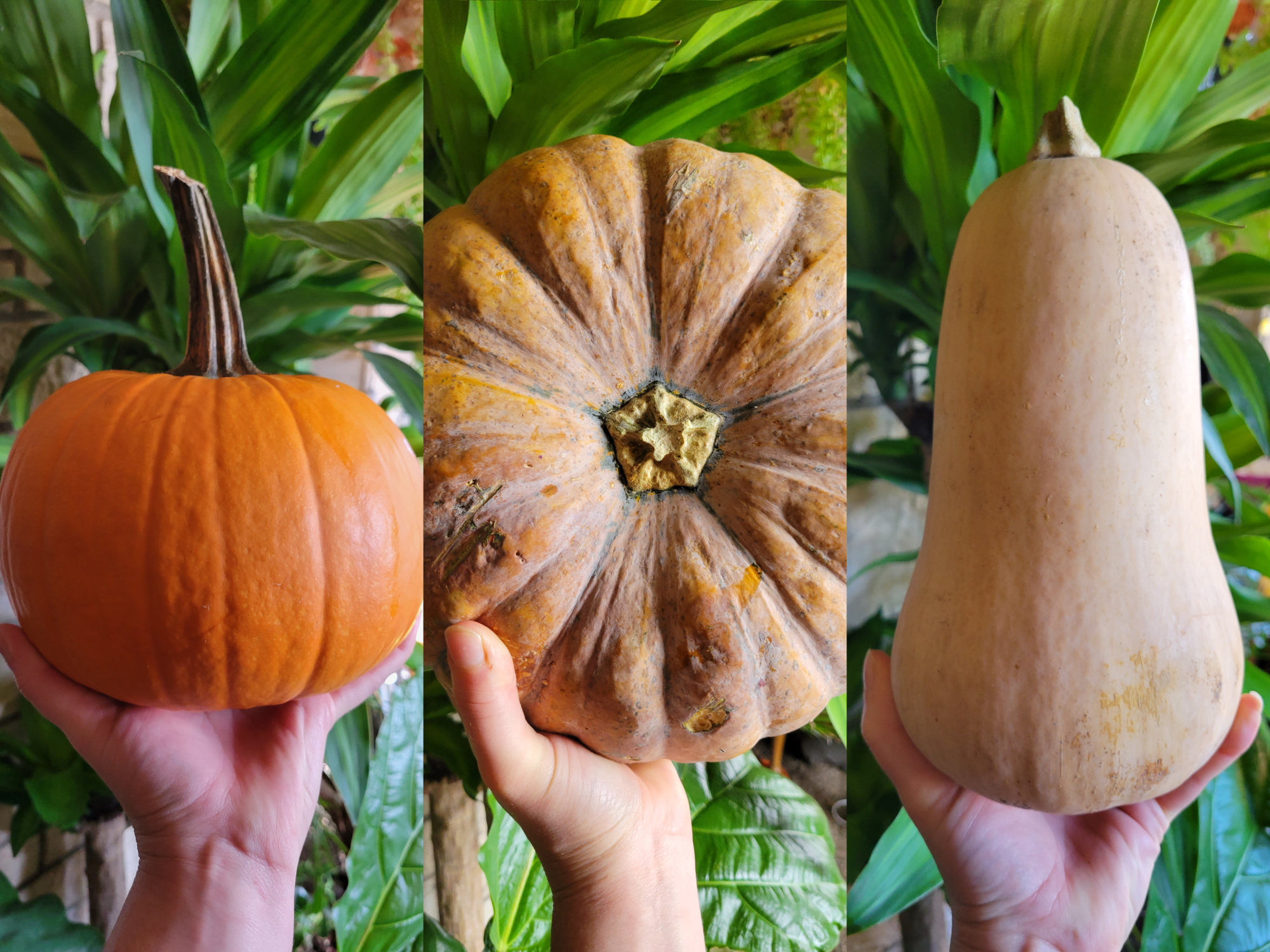
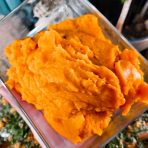

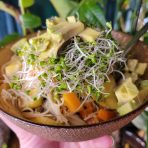
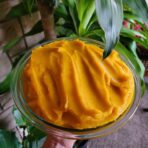
Leave a Reply